|
| Tourism |
Tourism Brochure
|
|
CONTENTS |
PREVIOUS |
|
Waterberg
The Waterberg Mountains of South Africa are located in the south and
west of the Limpopo Province against the Botswana border on the Tropic of
Capricorn - between one to two hours drive from Pretoria.
This is an area of great natural beauty where the environment is protected by
massive buttresses and deep forested valleys. Much of the region is either
given over to conservation or is too rugged to support agriculture. It is this
remoteness that attracts visitors from all over the world to experience the
drama and beauty of the African bushveld. The Waterberg, with its great
variety of wildlife, birds and scenic splendour is one of South Africa's prime
eco-tourism destinations. Game and nature reserves and an extensive
biosphere combine to conserve an area of over 14 500km2 of mountain
terrain. To the south and east are the established farming communities of
Thabazimbi, Bela Bela, Modimolle, Mookgophong and Mokopane. From
here the Springbok flats extend eastwards over the Nylsvley Floodplain
and Nature Reserve, which is one of South Africa's most important wetland
bird sanctuaries.
The Waterberg is a sparsely populated region, much of the area unsuited to
agriculture or even human habitation and yet it was here that scientists uncovered the
remains of Australopithecus africanus who lived and hunted in the mountains over 2,5million
years ago.
Stone age people followed, but these were thought to be itinerant migrants.
Later still came the early iron age migrants who arrived in the area, no
doubt attracted by the rich ore deposits (Thabazimbi).
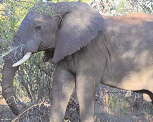 The San hunter - gatherers were known to have roamed the entire mountain
area at this time, leaving a record of their passage in the exquisite rock art which is
such an important attraction to the mountains today. The later iron age
settlers traded freely throughout the area and would have had frequent contact
with the settlement at Mapungubwe and from there to the Sofala coast where
eastern traders loaded the produce of the entire sub-continent.
The San hunter - gatherers were known to have roamed the entire mountain
area at this time, leaving a record of their passage in the exquisite rock art which is
such an important attraction to the mountains today. The later iron age
settlers traded freely throughout the area and would have had frequent contact
with the settlement at Mapungubwe and from there to the Sofala coast where
eastern traders loaded the produce of the entire sub-continent.
The more recent inhabitants of the Waterberg, principally the Pedi, arrived
from the north and settled in small communities. When Chief Sekwati took
over the leadership, groups were consolidated to strengthen defences
against marauding bands of Zulu and others.
 The first people of European origin arrived in 1808, to be followed shortly
thereafter by missionaries, hunters and traders. Then came the Voortrekker
settlers, who generally kept to the safer routes on the lower reaches of the
mountains.
The first people of European origin arrived in 1808, to be followed shortly
thereafter by missionaries, hunters and traders. Then came the Voortrekker
settlers, who generally kept to the safer routes on the lower reaches of the
mountains.
| Page 4 |
|
Message from the Chief Executive Officer of Limpopo Tourism and Parks
In 1854 war erupted between the Boer commando of General Piet Potgieter
and the forces of Chief Mugombhane (Mokopane) whose army, after a series
of skirmishes, was driven into the mountains where they took refuge in
the Makapan Caves. Piet Potgieter was killed in the engagement. When the
caves were finally stormed by the Boers some 1500 people were found to have
perished from starvation.
The Anglo-Boer War of 1899 to 1902 was fought around the Waterberg. A large
British force occupied Bela Bela, but the action was limited mainly to
skirmishes in and around Bela Bela and Modimolle.
The Geology of the Waterberg Millions of years after the intrusion of
the Bushveld complex, sediments began to accumulate across the
Waterberg system giving rise to distinctive red shales and quartzite
masses that make the region so distinctive. It is these cliffs, valleys and
buttresses that have protected the fragile vleis and vegetation from over
exploitation.
Today, the mining of chrome, lead, iron ore, tin, nickel and platinum, mostly on
the periphery of the mountains, provide much needed revenue to the
economy of the region.
Coal mining in the west towards the Limpopo Valley will fuel new power generation plants, now under construction.
The Fauna and Flora The Waterberg falls between two distinct biospheres, namely the
middleveld grasslands and sourveld to the east and the Kalahari thornveld to the west.
This meeting of biomes creates a converging crossover environment for animals, plants and birds which has, in
turn, presented unique opportunities to conservationalists in the restocking of
game sanctuaries. Birdlife, which is obviously free moving, has remained essentially undisturbed through
the protection provided within this mountainous environment. Over 400 species of birds have been recorded
across the greater Waterberg region making this one of South Africa's prime birding destinations.
All the principal game species, including elephant, rhino, leopard, buffalo and lion are present in the
larger reserves along with hundreds of lesser species which offer great viewing and photo opportunities.
The plant life of the Waterberg includes some rare species, many endemic to the mountains including the rare cycad
Eugene Marais.
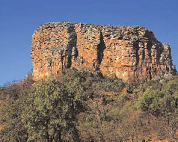 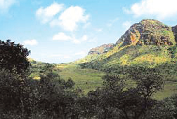
Typical sandstone cliffs of the Waterberg Peaks and valleys of the Waterberg - Marakele
| Page 5 | |
|
|
|
| Fire Service & Disaster Risk Management |
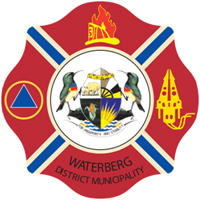
Toll Free: 0800111660
| | |
| Mayor's Office Reception Area |
| |
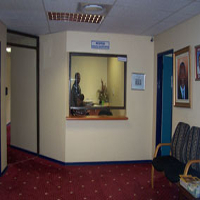
|
| |
| |
| |
 |
| |
| |
| |
|
|
|
|
